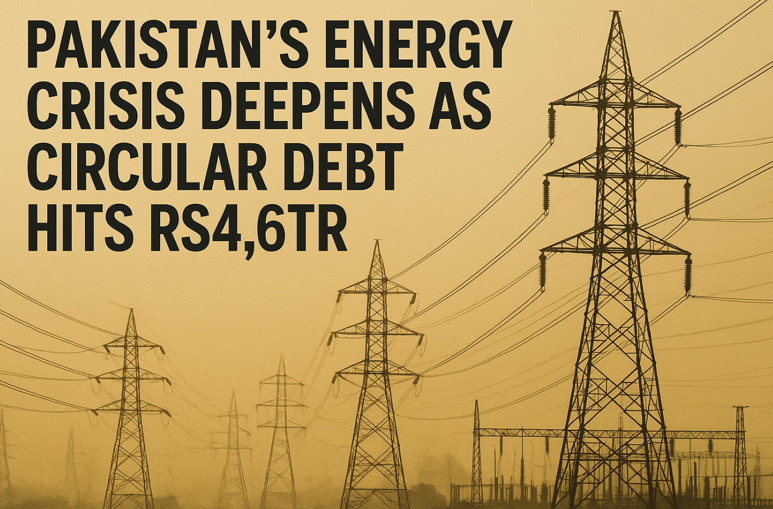ISLAMABAD: Pakistan’s energy sector is under severe stress. Weak reforms, poor bill recovery, and power theft have fueled a circular debt crisis of over Rs4.6 trillion. This financial burden equals almost 4% of GDP, according to the Institute of International Finance (IIF).
Mounting Circular Debt
The problem began in 2006 and continues to grow. Despite government bailouts, new debt keeps rising. As of June 2025:
- Rs1.6 trillion debt is tied to the power sector.
- Rs3 trillion is owed by power producers to oil and gas companies.
- Total liabilities now exceed Rs4.6 trillion.
Fiscal and Economic Impact
The debt crisis has created serious fiscal risks. Power Holding Limited (PHL) was formed to manage liquidity. But when its debt was absorbed into the national books, public debt increased further. Currently, circular debt makes up around 2.2% of total government debt.
This burden reduces spending on development, health, and social welfare. High electricity tariffs raise inflation, while reliance on imported fuel weakens the external balance and pressures the rupee.
Spillover Effects on Economy
The crisis impacts multiple sectors:
- Frequent power outages hurt industries and exports.
- Expensive electricity lowers business competitiveness.
- Domestic banks fund PHL, limiting credit for the private sector.
Government’s Policy Measures
Authorities have launched reforms, including:
- Competitive Trading Bilateral Contract Market (CTBCM) to allow direct deals between consumers and producers.
- Shifting from “take-or-pay” to “take-and-pay” contracts with Independent Power Producers (IPPs).
- Higher electricity tariffs with targeted subsidies.
- Efforts to curb power theft, improve bill recovery, and cut distribution losses.
- Push for local energy sources like hydropower and coal to reduce import dependence.
Still Unsustainable
Despite these steps, IIF says reforms lack depth. A recent fall in circular debt was due to commercial loans, not real improvements. Bailouts remain temporary fixes.
Reform Deficit
IIF highlighted weak governance, inefficiency in distribution companies, and political resistance to reforms. These issues keep the energy crisis alive. Without real structural changes, Pakistan’s circular debt will keep rising, draining fiscal space and slowing economic growth.




